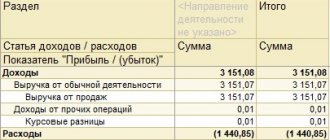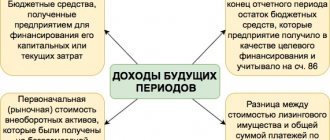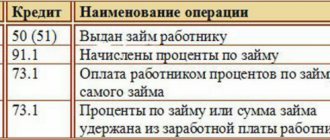Skip to content Kontur.Partner
PRACTICAL ACCOUNTING, TAXES, PERSONNEL
8-800-551-36-30
Free call within Russia
01/20/2019 Lara Bodrova Question and answer
Starting from 2021, policyholders submit to the Pension Fund the form “Information on the insurance experience of insured persons (SZV-STAZH)”. Filling it out raises many questions. Answers to some of them were given by Kontur.Extern specialists.
DLDETI: decoding
The insurance period for the purposes of assigning an insurance pension includes not only periods when a person worked under an employment contract (Part 1 of Article 11 of Law No. 400-FZ dated December 28, 2013), but also when he did not directly perform his labor function, although the employment contract continued to act with him. These are, for example, periods of receiving compulsory social insurance benefits for temporary disability, as well as periods of one parent caring for a child until he reaches the age of one and a half years, but not more than six years in total if there are several children in the family (clause 2 ,3 part 1 article 12 of the Law of December 28, 2013 No. 400-FZ, article 256 of the Labor Code of the Russian Federation).
At the same time, at the end of leave to care for a child up to one and a half years old, a parent has the right to take leave to care for a child up to three years old (Article 256 of the Labor Code of the Russian Federation). That is, in total, a parent can be on leave for a maximum of 3 years. At the same time, the second half of this vacation is no longer included in the insurance period. Accordingly, one and the other leave must be noted in the employee’s individual information, namely in subsection 6.8 of section 6 of RSV-1, differently.
Therefore, when granting parental leave (clause 37.19 of the Procedure for filling out the RSV-1):
- up to one and a half years old, the code “CHILDREN” is indicated to the mother or father of the child;
- from one and a half to three years of age, the mother or father of the child is given the code “DDILID”;
- up to three years of age, another relative of the child or his guardian is indicated with the code “CHILDREN”. After all, such leave can be granted, for example, to a working grandmother or grandfather when caring for a grandchild, as well as to another relative (clause 19 of the Resolution of the Plenum of the Supreme Court of the Russian Federation dated January 28, 2014 No. 1).
Subscribe to news
A letter to confirm your subscription has been sent to the e-mail you specified.
July 15, 2015
Resolution No. 194p dated 04.06.2015 “On amendments to the Resolution of the Board of the Pension Fund of the Russian Federation dated January 16, 2014 No. 2p” approved the changes made to the unified reporting of policyholders - form RSV-1 of the Pension Fund of the Russian Federation and the order of its completion.
Starting from the submission of calculations for accrued and paid insurance premiums for the first half of 2015 , the reporting form RSV-1 of the Pension Fund must be submitted by policyholders - payers of insurance premiums, making payments and other remuneration to individuals, taking into account the changes made, including:
— due to the fact that from 01/01/2015 the reduced tariffs (and the corresponding codes of categories of insured persons) for some categories of policyholders ceased to apply, the following sections were excluded from the RSV-1 form:
Section 3.1 Calculation of compliance of conditions for the right to apply a reduced tariff for payment of insurance premiums by insurance premium payers - public organizations of disabled people;
Section 3.2 Calculation of the compliance of conditions for the right to apply a reduced tariff for the payment of insurance premiums by insurance premium payers whose authorized capital consists entirely of contributions from public organizations of disabled people;
Section 3.4 “Calculation of the compliance of conditions for the right to apply a reduced tariff for the payment of insurance premiums by Russian organizations and individual entrepreneurs engaged in production, publication (broadcasting) and (or) publishing of mass media.
— in the title page of the Calculation, the field “Type of adjustment” is replaced with the words “Reason for clarification” (to be filled in when clarification of reporting);
— in the order of filling out section 1 “Calculation of accrued and paid insurance premiums”, a new edition has been provided for filling out line 120 “Amount of recalculation of insurance premiums for previous reporting (calculation) periods from the beginning of the billing period”, new more detailed explanations are provided about the reflected amounts of insurance premiums for this line is 120:
a) additional accrued amounts of insurance premiums based on inspection reports (desk and (or) on-site), for which, in the reporting period, decisions to hold (refusal to hold) payers liable (as before) came into force;
b) the amounts of insurance contributions identified by the Pension Fund body as excessively accrued by the payer of insurance premiums (the rules have been added);
c) in case of independent identification of the fact of non-reflection or incomplete reflection of information, as well as errors leading to an underestimation of the amount of insurance premiums payable for previous reporting (calculation) periods (as before),
d) in case of adjustment of the base for calculating insurance premiums of previous reporting (calculation) periods (based on accounting data), which is not recognized as an error, line 120 reflects the recalculation amounts accrued in the reporting (calculation) period” (rules have been added);
— on line 121 in columns 3 and 4 the amounts of recalculation of insurance premiums to finance the insurance pension are reflected from amounts exceeding the maximum value of the base for calculating insurance premiums, established annually by the Government of the Russian Federation in accordance with Part 5.1 of Article 8 of the Federal Law of July 24, 2009 No. 212-FZ.
If there are amounts of insurance premiums on lines 120 and 121, section 4 “Amounts of recalculation of insurance premiums from the beginning of the billing period” must be completed, which is also supplemented and has a new edition in accordance with the specified changes on lines 120 and 121.
— Section 4 for the current reporting period is not completed (as before) if an updated Calculation is submitted after the end of the reporting campaign reflecting changes in accrued and paid insurance premiums for the reporting period (in accordance with Article 17 of the Federal Law of July 24, 2009 No. 212-FZ).
— in subsection 6.1 “Information about the insured person”, a new field “Information about the dismissal of the insured person” has appeared, which is filled in by placing the symbol “X” in relation to insured persons who worked under an employment contract and were dismissed as of the end of the reporting period in the last three months of the reporting period period. This field is not filled in if the insured person is working under a civil contract”;
— the procedure for filling out subsection 6.3 of form RS-1 “Type of information adjustment” has been added: the detail “Registration number in the Pension Fund of the Russian Federation during the adjusted period” is not filled in if the payer of insurance premiums has not changed his location and the payer’s registration number has not changed;
— the rules for filling out subsection 6.4 “Information on the amount of payments and other remunerations accrued in favor of an individual” have been clarified and supplemented in cases where the policyholder submits corrective and canceling information:
a) in the correcting individual information of the insured person, the adjustment of which is not related to a change in the rate of insurance premiums (category code of the insured person), all indicators of the form, both those that need to be adjusted and those that do not require adjustment, are filled in.
b) when submitting corrective information related to a change in the rate of insurance premiums (category code of the insured person), all indicators of the form are filled in, both those that need to be adjusted and those that do not require adjustment. In this case, two (or more) category codes of the insured person are indicated in the corrective form: the code being canceled (with zero earnings), the new code, in accordance with which insurance premiums are again calculated (“new” code with the necessary earnings) and the code of the insured person, not requiring adjustment (with the same earnings as the original one).
c) when submitting corrective information, to cancel data for one insurance premium rate (category code of the insured person) and change data for another insurance premium rate (that is, the original information form contains more than one category code of the insured person), in a form with the “corrective” type » all form indicators are filled in, both those that need to be adjusted and those that do not require adjustment. In this case, in the form with the “corrective” type, two (or more) category codes of the insured person are indicated: the one being canceled (with zero earnings) and the one in accordance with which insurance premiums were again calculated (with the necessary earnings).
d) when submitting corrective information to supplement the code of the insured person, the original form of which was submitted without earnings (indicating the codes “CHILDREN”, “DECREE”, etc. in the work periods) with a missing category code of the insured person, the required code is indicated in subsection 6.4 .
In the case of submitting corrective information for an insured person dismissed earlier than the reporting period, section 6 with the “initial” type for the current reporting period is not filled out for this insured person, only a form correcting information for previous reporting (calculation) periods is submitted;
— in subsection 6.8 “ Operation period for the last three months”:
in additional information for calculating the insurance period, instead of the excluded code “ADMINISTER”, the period of leave without pay is reflected with the code “NEOPL” (Leave without pay, downtime due to the fault of the employee, unpaid periods of suspension from work ... and other unpaid periods, except for periods with codes DLDETI and Chernobyl NPP);
“Calculation of insurance experience (additional information) includes a code for additional days off for persons caring for disabled children” (DOPVIKH);
The content of the following codes of additional information in the calculated insurance period has been specified:
code “CHILDREN” - filled in if one of the parents of a child is granted leave to care for a child under the age of one and a half years;
code “DLCHILDREN” - filled in if one of the parents is granted leave to care for a child aged from one and a half years to three years;
the code “CHILDREN” is filled in if parental leave is granted to a grandmother, grandfather, other relatives or guardians who are actually caring for the child before he or she reaches the age of three.
For individual information in which the following additional information codes for the calculated insurance period in section 6.8 are filled in, the code for special working conditions and the code for conditions for early assignment of an insurance pension are not filled in:
parental leave up to 1.5 years – (CHILDREN);
leave without pay (NEOPL);
leave without pay, downtime due to the fault of the employee, unpaid periods of suspension from work (preclusion from work), unpaid leave of up to one year provided to teaching staff, one additional day off per month without pay provided to women working in rural areas localities, unpaid time of participation in a strike and other unpaid periods (UNOPL);
off-the-job training (QUALIF);
performance of state or public duties (SOCIETY);
days of donating blood and its components and days of rest provided in connection with this (SDKROV);
suspension from work (preclusion from work) through no fault of the employee (SUSPENDED);
additional leaves for employees combining work with training (UCHOTPUSK);
parental leave from 1.5 to 3 years (CDCHILDREN);
additional leave for citizens exposed to radiation as a result of the disaster at the Chernobyl Nuclear Power Plant (ChNPP);
additional days off for persons caring for disabled children (DOPVIKH);
parental leave until the child reaches the age of three to the grandparents, other relatives or guardians actually caring for the child (CHILDREN).
For all questions regarding reporting, including changes in the reporting form, the procedure for filling out, the Program for generating and verifying reporting, you can contact the district (mountains) of the Pension Fund of the Kabardino-Balkarian Republic at the place of registration, or visit the PFR website on the Internet.
Branches of the Pension Fund of the Russian Federation
for the Kabardino-Balkarian Republic
www.pfrf.ru
Submission of individual information since 2017
Contribution payers will have to report for the last time using the RSV-1 form, which also contains personalized accounting data, at the end of 2021. For the periods of 2021, policyholders will have to submit reports to the tax authorities. And individual information, as before, will need to be submitted to the Pension Fund. But not 4 times a year, as RSV-1 is now submitted, but only once - no later than March 1 of the year following the reporting year (Clause 2, Article 11 of Law No. 27-FZ dated 01.04.1996, as amended, valid from 01/01/2017).
DLCHILDREN is a code designation of the status of a “maternity leaver” in the personalized accounting system. It must be affixed for the corresponding category of employees registered with the employer. This type of information is submitted to the Pension Fund of the Russian Federation, despite the fact that the Federal Tax Service is responsible for collecting contributions and reporting on them. From January 2021, employers must submit two types of reports to the Pension Fund of the Russian Federation that serves them - monthly information about all insured persons employed by them and an annual form with information about the insurance experience for all employees - SZV-STAZH, a sample of which you will find.
Questionnaire of the insured person for receiving SNILS (form ADV-1) in 2021
To do this, you need to write an application addressed to the employer. However, payment for such days off is not at the expense of the employer, but at the expense of the social protection department, based on the average daily earnings;
- If a child becomes disabled before the age of 8, then the person who cared for him at that age has the right to early retirement. Men can retire at 55, but must have at least 20 years of work experience. Women - 50 years old, but work experience - 15 years;
- Persons accompanying a disabled child, like him, have the right to free travel in any transport, except taxis and minibuses;
- A family raising a disabled person has the right to receive benefits in the amount of 50% of the amount of utility bills. At the same time, subsidies are also provided;
- A person accompanying a disabled child to the place of treatment and back has the right to free travel with him. This right is given only once a year;
- The right to priority provision of plots of land for gardening, vegetable farming, farming and construction.
Recently, the number of disabled children has increased significantly compared to the last decade of the 20th century. It's a pretty sad statistic, but it's true. Increasingly, children are being born with impaired health and vital functions. Such children are given disabilities from birth.
Children's Pension Fund - what is it?
The designation of codes by type of length of service of insured persons working at an enterprise or individual entrepreneur is indicated only in the SZV-STAZH. The form template was approved by Resolution No. 3p dated January 11, 2017 (issued by the Board of the Pension Fund of the Russian Federation). A third section is provided for information about different periods of work for all insured employees of the employer.
This set of information is necessary for pension structures to identify the total insurance period for each person. The final value of this indicator will be used when calculating the pension. Only those time intervals that, according to the legislation, can be classified as insurance experience are subject to summation. This category also includes some periods when an enterprise or individual entrepreneur concluded an employment contract with a person, but the employee did not actually fulfill his duties and was not at his workplace. An example is leave taken to care for children until they reach the age of 1.5 years.
CHILDREN - the PFR decoding is given as leave for children aged 1.5-3 years. This is the time when a woman did not actually perform a labor function due to being on maternity leave. This type of leave is provided for by labor law and cannot be interrupted at the initiative of the employer. Its peculiarity is that from the moment the child turns one and a half years old, the time spent by the employee at home ceases to be taken into account in the insurance period. But the right to include these months in the work experience is not lost.
DLDETI and CHILDREN - what is the difference:
- the first indicator is used to identify the category of workers who care for children aged 1.5-3 years, the length of service is not insurance;
- The code designation CHILDREN is used for a group of employees who are on leave to care for their children, subject to the inclusion of this time in the insurance type of experience (the child’s age must be up to 1.5 years).
In both cases, codes are provided for workers who are not working to care for their children. This only applies to moms. For grandparents and other relatives and guardians, the reporting form offers a separate code designation (DETIPRL). The codes must be entered in column 11. The full list of codes is given in the Parameter Classifier, which is approved by Resolution No. 3p. Despite the fact that only the period of caring for small children up to 1.5 years is important to determine the total insurance period, all types of leave and length of service must be indicated in the information so that the pension authorities have the opportunity to accumulate a full range of information about the work activity of each insured person .
Benefits for disabled children
Disabled children receive a social pension. Its size as of April 1, 2014 is 10,376.86 rubles . Group I disabled people from childhood also receive the same pension. Group II disabled children receive a pension in the amount of 8,647.4 rubles . Disabled children receive a pension until they reach adulthood. There is no need to undergo a medical and social examination every year.
In this case, disabled children have the right to the following benefits:
- Receive free medications according to doctors' prescriptions;
- Preferential right to admission to preschool institutions, as well as medical treatment, if there is a prescription for this;
- A disabled child has the right to free travel in any type of transport, except taxis and minibuses;
- They have the right to receive free wheelchairs and other aids necessary for the functioning of such a child. To obtain such funds, it is necessary to obtain an ITU opinion.
Certificate of status of the Pension Fund of the Russian Federation
The Pension Fund of the Russian Federation was formed in accordance with Resolution of the Supreme Council of the RSFSR dated December 22, 1990 No. 442-1 “On the organization of the Pension Fund of the RSFSR” for the state management of pension finances in the RSFSR.
This resolution determined the status of the Pension Fund of the Russian Federation as an independent financial institution operating in relation to the Law of the RSFSR “On Banks and Banking Activities in the RSFSR” and reporting to the Supreme Council of the RSFSR (in accordance with the resolution of the Council of Ministers - Government of the Russian Federation dated 22 September 1993 No. 958 “On the transfer of organizations and institutions to the jurisdiction of the Council of Ministers - the Government of the Russian Federation”, it was established that the Pension Fund of the Russian Federation is under the jurisdiction of the Council of Ministers - the Government of the Russian Federation and is accountable to it).
Resolution of the Supreme Council of the RSFSR dated December 22, 1990 No. 442-1 also established the provision that the Fund’s funds are not included in the republican budget of the RSFSR, other budgets and funds and are not subject to withdrawal. Later, this norm was provided for in all regulatory legal acts regulating the activities of the Pension Fund of the Russian Federation.
Thus, funds intended for pension provision were allocated from the state budget to the independent budget of the RSFSR Pension Fund (while remaining state property).
It should be noted that this resolution also established the amount of social insurance contributions obligatory for payment by all enterprises and organizations, regardless of their form of ownership and subordination.
Under the previous system, when funds intended to finance the payment of state pensions were part of the state budget, it was possible to borrow these funds for other state needs (in addition to pension payments), which negatively affected the financial sustainability of the pension system, that is, the ability The pension fund maintains the existing level of solvency in the event of possible adverse external and internal impacts on financial flows.
With the establishment of autonomy of the pension budget, the Fund's income ceased to be included in the budgets of other levels, a step was taken towards insurance principles and increasing the efficiency of the state pension system in the Russian Federation, and the foundations were laid for achieving long-term financial sustainability of this system.
During the period that lasted from the formation of the Fund until January 1, 1992, the Pension Fund of the RSFSR carried out its activities on the basis of the Temporary Regulations on the Pension Fund of the RSFSR and the Procedure for the payment of insurance contributions by enterprises, organizations and citizens to the Pension Fund of the RSFSR, approved by a resolution of the Supreme Council of the RSFSR dated January 30, 1991 No. 556-1, which established provisions similar to the provisions of Resolution of the Supreme Council of the RSFSR dated December 22, 1990 No. 442-1.
On January 1, 1992, in accordance with the resolution of the Supreme Council of the Russian Federation of December 27, 1991 No. 2122-1 “Issues of the Pension Fund of the Russian Federation (Russia)” the Regulations on the Pension Fund of the Russian Federation (Russia) and the Procedure for payment of insurance contributions by employers and citizens to the Pension Fund of the Russian Federation (Russia).
These documents also contained provisions on the status of the Pension Fund of the Russian Federation, according to which the Pension Fund of the Russian Federation was an independent financial and credit institution, and its funds were in the state ownership of the Russian Federation and were not included in budgets or other funds and were not subject to withdrawal.
The Pension Fund of the Russian Federation was entrusted with the responsibility to ensure the collection and accumulation of insurance contributions necessary to finance the payment of state pensions.
According to the above-mentioned regulatory legal acts, the Pension Fund of the Russian Federation carried out functions related exclusively to the financial component of the pension system (collection of insurance contributions, their accumulation, control over the receipt and expenditure of funds, etc.).
The Pension Fund of the Russian Federation financed the payment of pensions, and the functions of assigning and paying pensions were performed by social protection authorities.
In this regard, it is worth mentioning the Decree of the President of the Russian Federation of May 29, 1993 No. 787 “On the management of pension provision in the Russian Federation”, according to which the intervention of the Pension Fund of the Russian Federation and its branches in the operational activities of social protection bodies and the transfer of functions to it the appointment and payment of pensions were considered unacceptable.
At the same time, there was a situation when the Pension Fund of the Russian Federation carried out not only financing, but also the assignment and payment of state pensions (within the framework of a unified pension service). Initially, a unified pension service, as an experiment in accordance with the Resolution of the Presidium of the Supreme Council of the Russian Federation dated July 6, 1992 No. 3209-1, was created in the Moscow region on the basis of the branch of the Pension Fund of the Russian Federation in the Moscow region with the transfer to its composition of units of the Main Directorate of Social Security protection of the population of the Moscow region and the services subordinate to it in the cities and districts of the Moscow region, which were involved in the assignment (recalculation) and payment of pensions and benefits. By Resolution of the Presidium of the Supreme Council of the Russian Federation dated May 11, 1993 No. 4940-1, the results of the experiment were approved and it was decided to prepare, including with the participation of the Government of the Russian Federation, proposals for organizing a unified federal pension service in the Russian Federation and submit them for consideration by the Supreme Council Council of the Russian Federation.
Later, by Decree of the President of the Russian Federation of September 27, 2000 No. 1709 “On measures to improve the management of state pensions in the Russian Federation,” the Pension Fund of the Russian Federation was assigned powers to pay state pensions.
It should be noted that this Decree of the President of the Russian Federation was the subject of consideration in the Constitutional Court of the Russian Federation and was recognized as not contradicting the Constitution of the Russian Federation.
The Constitutional Court of the Russian Federation, in its resolution of June 25, 2001 No. 9-P on this issue, indicated that the Pension Fund of the Russian Federation essentially performs the functions of an insurer that carries out the operational management of compulsory (state) pension insurance funds and ensures the appointment and timely payment of state pensions. Consequently, the Pension Fund of the Russian Federation is endowed with public authority to ensure the constitutional right to a state pension, including the authority to assign these pensions.
The publication of Decree of the President of the Russian Federation dated September 27, 2000 No. 1709 laid the foundation for the formation of the current status of the Pension Fund of the Russian Federation as an insurer of compulsory pension insurance.
On January 1, 2002, the implementation of pension reform began in the Russian Federation. For these purposes, a number of legislative acts were adopted aimed at transforming the pension system. These documents also touched upon issues of the status of the Pension Fund of the Russian Federation.
Federal Law No. 167-FZ of December 15, 2001 established that the Pension Fund of the Russian Federation is an insurer of compulsory pension insurance, and determined the organizational and legal form of the Pension Fund of the Russian Federation as a legal entity - a “state institution”. According to Article 5 of the Federal Law, the Pension Fund of the Russian Federation and its territorial bodies constitute a single centralized system of bodies managing compulsory pension insurance funds in the Russian Federation, in which lower-level bodies are accountable to higher-level ones.
At the same time, the Regulations on the Pension Fund of the Russian Federation (Russia), approved by Resolution of the Supreme Council of the Russian Federation of December 27, 1991 No. 2122-1, are valid to the extent that they do not contradict this Federal Law.
It should be noted that the presence of a centralized system is a distinctive feature of the Pension Fund of the Russian Federation in comparison, for example, with the compulsory health insurance system, in which territorial compulsory health insurance funds are included in the structure of the executive authorities of the constituent entities of the Russian Federation.
The system of the Pension Fund of the Russian Federation and its territorial bodies has a three-level structure:
- central office (Executive Directorate of the Pension Fund of Russia, Audit Commission of the Pension Fund of Russia);
- branches of the Pension Fund of Russia in the constituent entities of the Russian Federation;
- management (independent departments) of the Pension Fund of Russia in cities (districts).
The management of the Pension Fund of the Russian Federation in accordance with the Regulations on the Pension Fund of the Russian Federation (Russia) is carried out by the Board of the Pension Fund of the Russian Federation, which also approves the regulations on the territorial bodies of the Fund, which are legal entities.
Pension Fund of the Russian Federation and its functions. What is pension reform
The Pension Fund of the Russian Federation (PFR) is one of the most significant social institutions in the country. This is the largest federal system for providing public services in the field of social security in Russia.
The Pension Fund of the Russian Federation was formed on December 22, 1990 by Resolution of the Supreme Council of the RSFSR No. 442-1 “On the organization of the Pension Fund of the RSFSR” for the state management of pension finances, which needed to be allocated to an independent off-budget fund. With the creation of the Pension Fund in Russia, a fundamentally new mechanism for financing and paying pensions and benefits appeared. Funds for financing the payment of pensions began to be formed from the receipt of compulsory insurance contributions from employers and citizens.
The structure of the Pension Fund includes 8 Directorates in the Federal Districts of the Russian Federation, 82 Branches of the Pension Fund in the constituent entities of the Russian Federation, as well as the OPFR in Baikonur (Kazakhstan), as well as almost 2,500 territorial directorates in all regions of the country. The Pension Fund system employs more than 133,000 specialists.
The Pension Fund carries out a number of socially significant functions, including:
— accounting of insurance funds received under compulsory pension insurance;
— assignment and payment of pensions. Among them are labor pensions (old age, disability, loss of a breadwinner), state pensions, pensions for military personnel and their families, social pensions, and civil servants’ pensions. 36.5 million Russian pensioners receive pensions from the Fund;
— assignment and implementation of social payments to certain categories of citizens: veterans, disabled people, disabled people due to military trauma, Heroes of the Soviet Union, Heroes of the Russian Federation, etc.
— personalized accounting of participants in the compulsory pension insurance system. The system takes into account insurance pension payments of almost 63 million Russians;
— interaction with employers who pay insurance pension contributions. Information about citizens insured in the pension system comes from 6.2 million legal entities;
— issuance of certificates for receiving maternity (family) capital;
— management of pension system funds, incl. the funded part of the labor pension, which is carried out through the state management company (Vnesheconombank) and private management companies;
— implementation of the State Co-financing of Pensions Program.
The pension reform is aimed at changing the existing distribution system for calculating pensions, supplementing it with a funded part and personalized accounting of the state’s insurance obligations to each citizen. The main objective of the reform is to achieve long-term financial balance of the pension system, increase the level of pension provision for citizens and create a stable source of additional income to the social system. The essence of the reform is to radically change the relationship between employee and employer: to increase the responsibility of workers for ensuring their old age, as well as to increase the employer’s responsibility for paying insurance premiums for each employee. The previously existing pension system did not give the worker the opportunity to earn a normal pension; it only redistributed funds between groups with different income levels and from one region to another. Whereas the new pension model is much more insurance and takes into account the pension rights of citizens depending on the size of their salaries and pension contributions paid. According to the new pension model, contributions to the Pension Fund of the Russian Federation, which total 28%, are divided into three parts:
14% goes to the federal budget and is used to pay the basic state pension; at the same time, a guaranteed minimum basic pension has been established;
8-12% of wages are the insurance part of the labor pension and are transferred to the Pension Fund of the Russian Federation;
from 2 to 6% are sent to the fund to form the “accumulative component of the labor pension.” The accumulative component will be formed from part of the unified social tax (UST) paid by the employer, and its size is tied to wages and, accordingly, to the volume of accumulated personal income. citizen's funds account.
The size of the pension in the new pension model is determined, first of all, not by the employee’s length of service, but by his real earnings and the amount of contributions to the Pension Fund made by the employer. This should encourage workers, and then employers, to abandon various kinds of “gray” salary schemes and bring hidden parts of salaries out of the shadows, thereby increasing the flow of funds to pay pensions to today’s retirees. The size of the basic and insurance parts of the pension is supposed to be indexed annually taking into account the inflation rate. According to the law “On Compulsory Pension Insurance”, the state bears full responsibility for the payment of pensions to citizens, including subsidiary responsibility for the activities of the Russian Pension Fund and is responsible for its obligations to the insured persons.
Why do you need SNILS?
For work and retirement. When a person gets a job, the employer needs his SNILS in order to make contributions to the future pension fund of his employee.
To receive government services electronically. Currently, the provision of state and municipal services via the Internet has become widespread. Thus, using the service of the public services portal, you can obtain or exchange a foreign or Russian passport without waiting in line, find out the status of your individual personal account with the Russian Pension Fund, and much more. Registration on the government services portal and receiving services is possible only if you have a SNILS.
To receive government benefits. SNILS is used to create registers of citizens entitled to government social services and benefits. For example, such as receiving free medicines, including for children.
To reduce the number of documents when receiving various services. SNILS serves as an identifier of information about a citizen in the system of interdepartmental interaction. Thus, citizens spend less time obtaining certificates and documents that must be submitted to various departments. For example, when receiving a certificate for maternity (family) capital.
Dlotpusk code in SZV-STAZH: what is it and how to indicate it
71 Instructions). That is, corrective information must be provided simultaneously with current reporting in a single set of documents, which includes (clauses 68, 71 of the Instructions): - packs of initial information and packs of corrective information, accompanied by the general inventory form ADV-6-2; - form RSV-1. As it was explained to us in the PFR branch for Moscow and the Moscow region (Prygova Olga Igorevna - Deputy Manager of the Branch of the Pension Fund of the Russian Federation for Moscow and the Moscow region), until 01/01/2012 it was allowed to submit information indicating the code “CHILDREN” for women who are on parental leave both under the age of 1.5 years and in the period from 1.5 to 3 years. And although the Instructions now say that the “CHILDREN” parameter has been in effect since 01/01/2010, the previously submitted information has been adjusted to indicate the code “CHILDREN” for women on maternity leave aged 1.5 to 3 years , not required. But if the initial information is for 2010-2011. were not submitted on time, they can be provided in a separate package of documents. And in this case, there is no need to attach the RSV-1 form for that period to this bundle (after all, in SZV-6-1 there will be no accrued insurance premiums, since nothing was paid to the employees). So we recommend that you submit previously unsubmitted initial information during the reporting campaign for the 1st half of the year simultaneously with the provision of a package of current reporting (form RSV-1, initial information for the next reporting period and corrective information, if any).
The Glavnaya Kniga publishing house has been specializing in publishing publications for accountants and tax specialists for more than 12 years. The "General Ledger" magazine is a practical magazine for the modern accountant. Journal “General Ledger. Conference room" - accounting seminars on your table.
>Types of service periods for reporting to the Pension Fund and their reflection in 1C
Problem: Warning is issued
When specifying the code “DLOTPUSK”, the PFR verification program may issue a warning with code 20. However, the warning is not a basis for refusal to accept reports and in this case is caused by technical problems. That is, even if the program warns you about the inadmissibility of specifying the “DLOTPUSK” code, just don’t pay attention. The report for 2021 will be accepted without problems. There cannot be any fines for this, since the accountant is guided by the official procedure for filling out the SZV-STAZH. Let's assume that a person was on annual paid leave from June 5 to June 25, 2021. Then show the DLOTPUSK code in SZV-STAZH as follows:
buhguru.com






